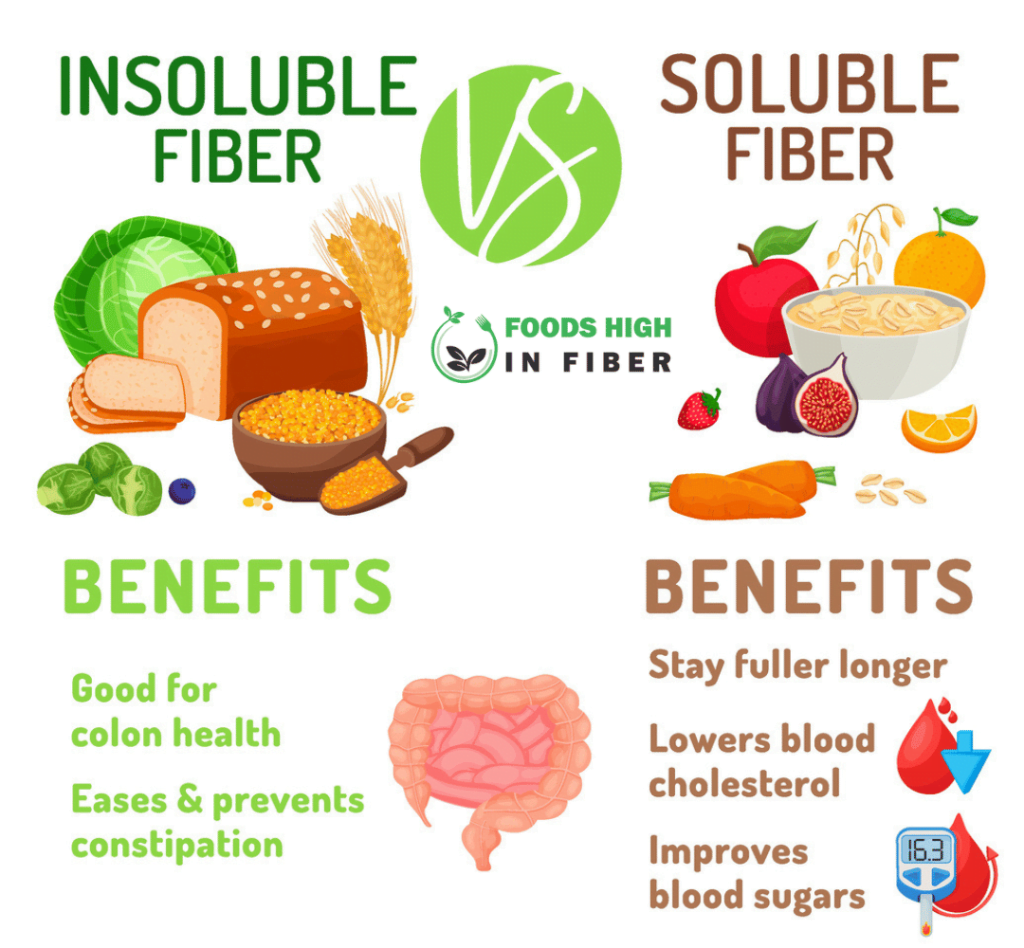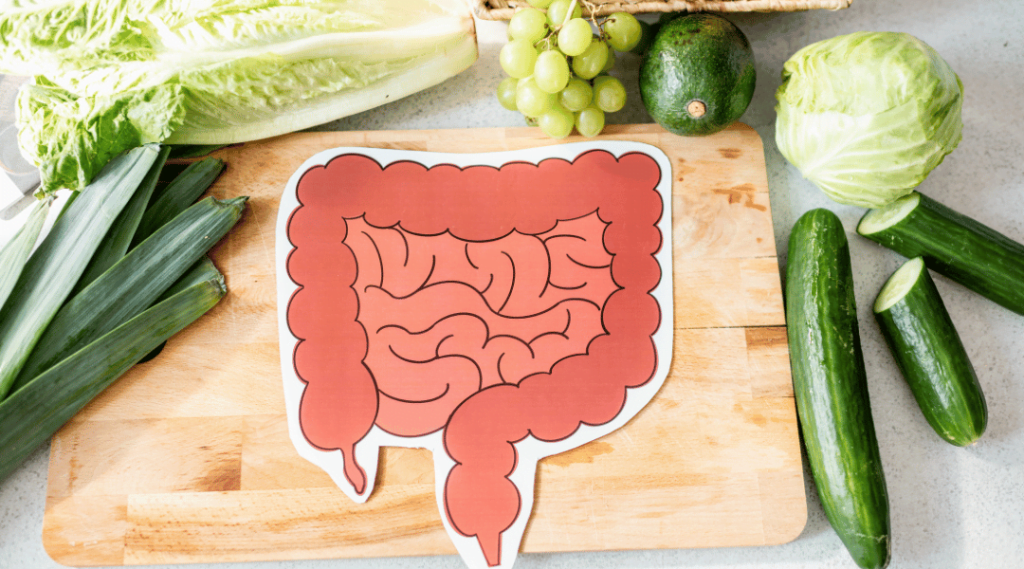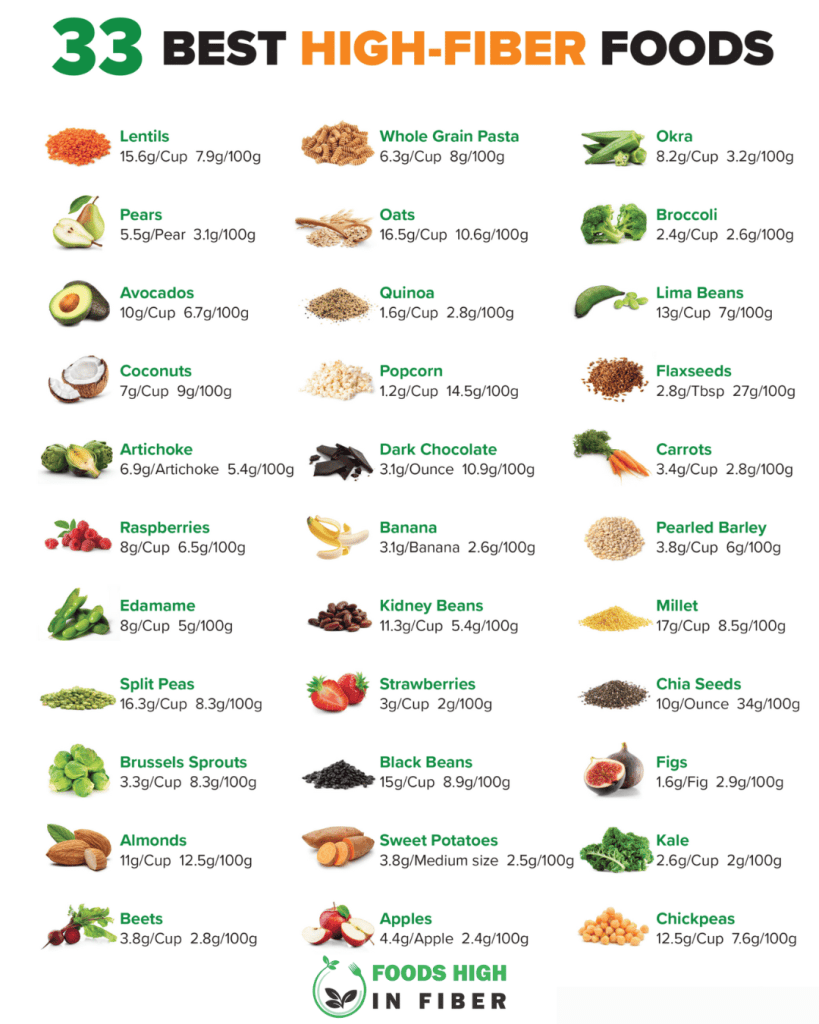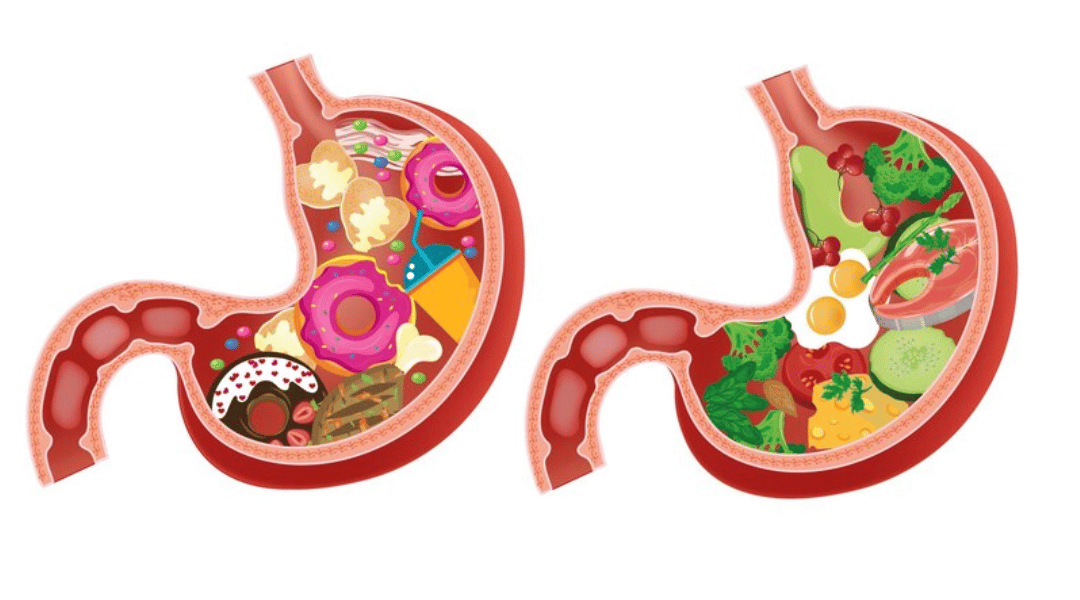A healthy gut is the foundation of overall well-being, as it plays a crucial role in digestion, nutrient absorption, immune function, and even mental health. Central to maintaining a healthy gut is balance and diversity of gut microbiota, the trillions of microorganisms residing in our digestive system. One key factor in supporting gut health is consuming an adequate amount of fiber in our diet. Fiber acts as a fuel for beneficial gut bacteria promotes regular bowel movements and helps prevent digestive disorders. In this article, we will explore importance of fiber and how it contributes to a healthy gut, providing you with valuable insights to optimize your digestive health.
When it comes to maintaining a good healthy gut, one key component often emphasized is dietary fiber. Fiber is a type of carbohydrate that body cannot digest or absorb. Instead, it passes relatively intact through the digestive system. While it may not provide energy or essential nutrients, its role in promoting overall well-being is crucial.
Definition
Dietary fiber refers to the parts of plant foods that cannot be broken down by digestive enzymes in human body. Unlike other carbohydrates, fiber remains undigested as it passes through the digestive system.
Importance of Dietary Fiber
Fiber plays a significant role in maintaining optimal healthy gut and well-being. Its benefits encompass various aspects of body functioning, including digestion, weight management, blood sugar control, and heart health.
What Is Fiber?
Fiber, also known as dietary fiber or roughage, refers to indigestible portion of plant-based foods. It is a complex carbohydrate that cannot be broken down by the enzymes in our digestive system. Unlike other carbohydrates, such as sugars and starches, fiber passes through digestive tract relatively intact.
Health Benefits of Fiber 2023
Fiber, also known as dietary fiber, is a type of carbohydrate found in plant-based foods such as fruits, vegetables, whole grains, legumes, nuts, and seeds. While it is not digested or absorbed by the body like other carbohydrates, it plays a crucial role in maintaining overall health. Let’s explore numerous health benefits of fiber:
Promotes Digestive Health
- Prevents Constipation and Promotes Regular Bowel Movements: Fiber adds bulk to stool, making it easier to pass through the digestive system. It helps prevent constipation by speeding up transit time of food and increasing stool frequency.
- Reduces Risk of Developing Hemorrhoids and Diverticular Disease: By promoting regular bowel movements and preventing constipation, fiber helps reduce the risk of hemorrhoids (swollen blood vessels in rectum) and diverticular disease (inflammation or infection of small pouches in colon).
Supports Weight Management
- Provides a Feeling of Fullness and Reduces Overeating: High-fiber foods take longer to chew and digest, which can increase satiety and reduce the likelihood of overeating. Fiber adds bulk to meals, leading to a greater feeling of fullness.
- Aids in Maintaining a Healthy Weight or Promoting Weight Loss: Due to its low-calorie nature, fiber-rich foods are generally less energy-dense. By incorporating high-fiber foods into the diet, individuals can consume larger portions with fewer calories, supporting weight management goals.
Helps Control Blood Sugar Levels
- Slows Down Absorption of Sugar, Preventing Blood Sugar Spikes: Soluble fiber forms a gel-like substance in the digestive system, which slows down the digestion and absorption of carbohydrates. This gradual absorption helps prevent rapid spikes in blood sugar levels after meals.
- Benefits Individuals with Diabetes in Managing Their Condition: By regulating blood sugar levels, fiber can be particularly beneficial for individuals with diabetes. It helps improve glycemic control and reduces need for insulin or other medications.
Lowers Risk of Heart Disease
- Reduces Cholesterol Levels and Lowers Blood Pressure: Soluble fiber binds with cholesterol in the digestive tract, reducing its absorption and promoting its elimination from body. This can lead to lower levels of LDL (bad) cholesterol, which is associated with a reduced risk of heart disease. Additionally, a high-fiber diet has been linked to lower blood pressure levels.
- Enhances Cardiovascular Health: By lowering cholesterol and blood pressure, fiber contributes to overall cardiovascular health. It reduces risk of developing conditions such as coronary artery disease, heart attacks, and strokes.
These health benefits highlight importance of including an adequate amount of dietary fiber in one’s daily diet. By promoting digestive health, aiding weight management, controlling blood sugar levels, and lowering the risk of heart disease, fiber plays a crucial role in maintaining overall health and well-being.
Types of Fiber
Fiber refers to a type of carbohydrate that cannot be digested by human body. It plays a crucial role in maintaining a healthy gut or digestive system and offers several health benefits. There are two main types of fiber: soluble fiber and insoluble fiber. Let’s explore each type in more detail:

Soluble Fiber
Soluble fiber is a type of fiber that dissolves in water to form a gel-like substance in the digestive system. It plays a crucial role in maintaining good health. Some key characteristics and sources of soluble fiber include:
Forms a gel-like substance in digestive system:
Soluble fiber has the unique property of absorbing water and forming a gel-like substance during digestion. This gel-like consistency slows down the digestion process, allowing for a more controlled release of nutrients and a steadier absorption of sugars.
Found in foods like oats, legumes, fruits, and vegetables:
Soluble fiber is commonly found in various plant-based foods, including:
Oats: Oatmeal and oat bran are excellent sources of soluble fiber.
Legumes: Beans, lentils, chickpeas, and other legumes contain high amounts of soluble fiber.
Fruits: Apples, oranges, berries, pears, and avocados are rich in soluble fiber.
Vegetables: Broccoli, carrots, Brussels sprouts, and sweet potatoes are examples of vegetables that provide soluble fiber.
Insoluble Fiber
Insoluble fiber, as name suggests, does not dissolve in water. Instead, it passes through the digestive system relatively intact. It hasseveral important functions and is predominantly found in whole grains, nuts, and seeds. Key characteristics and sources of insoluble fiber include:
Adds bulk to stool and aids in regular bowel movements:
Insoluble fiber promotes regular bowel movements by adding bulk to stool, which helps prevent constipation and ensures proper waste elimination. It passes through the digestive system mostly intact, providing roughage and promoting healthy gut or digestion.
Commonly found in whole grains, nuts, and seeds:
Insoluble fiber can be obtained from various plant-based sources, such as:
Whole Grains: Foods like whole wheat, brown rice, quinoa, and whole grain bread and pasta are rich in insoluble fiber.
Nuts: Almonds, walnuts, and other nuts contain insoluble fiber, along with numerous other nutrients.
Seeds: Flaxseeds, chia seeds, and sesame seeds are examples of seeds that provide insoluble fiber.
Consuming a combination of soluble and insoluble fiber is important for maintaining optimal health. Both types of fiber contribute to overall digestive health, promote regular bowel movements, and offer a range of additional benefits.
Fiber and Healthy gut in 2023
Fiber and healthy gut are closely interconnected, as fiber plays a crucial role in maintaining a healthy digestive system. Fiber is a type of carbohydrate found in plant-based foods that cannot be digested by the human body. Instead, it passes through the digestive system relatively intact, providing a range of health benefits.
Here are some ways in which fiber contributes to gut health:
- Improved Digestion: Fiber adds bulk to the stool, making it easier to pass through the digestive system. It helps prevent constipation by promoting regular bowel movements and reducing the risk of hemorrhoids and other digestive disorders.
- Increased Bowel Regularity: Soluble fiber absorbs water in the intestines, forming a soft gel-like substance. This helps regulate bowel movements and prevents both diarrhea and constipation.
- Promotion of Healthy Gut Bacteria: Fiber acts as a prebiotic, providing nourishment for beneficial gut bacteria. These bacteria ferment fiber in the colon, producing short-chain fatty acids (SCFAs) like butyrate. SCFAs provide energy to the cells lining the colon and help maintain a healthy gut environment.
- Reduced Risk of Colon Cancer: Adequate fiber intake has been associated with a decreased risk of colon cancer. Fiber helps maintain a healthy digestive system by promoting regular bowel movements, reducing the time waste materials spend in the colon, and diluting potential carcinogens.
- Blood Sugar Regulation: Soluble fiber slows down the absorption of sugar into the bloodstream, which can help regulate blood sugar levels. This is particularly beneficial for individuals with diabetes or those at risk of developing the condition.
- Lower Cholesterol Levels: Soluble fiber can help lower LDL (bad) cholesterol levels by binding to cholesterol in the digestive system and preventing its absorption. This, in turn, reduces the risk of heart disease.
To incorporate more fiber into your diet and promote a healthy gut, it is recommended to consume a variety of fiber-rich foods such as whole grains (oats, quinoa, brown rice), legumes (beans, lentils), fruits, vegetables, nuts, and seeds. The daily recommended intake of fiber varies depending on age, gender, and specific dietary needs, but the general guideline is around 25-38 grams per day for adults.
It’s important to increase fiber intake gradually and drink plenty of water to allow for easier digestion and prevent discomfort. If you have specific health conditions or concerns, it is advisable to consult with a healthcare professional or registered dietitian to determine the appropriate amount of fiber for your individual needs.

How to Incorporate Fiber into Your Diet?
Incorporating fiber into your diet is a great way to improve your overall healthy gut and maintain a balanced digestive system. Fiber is an essential nutrient that aids in digestion, regulates blood sugar levels, promotes satiety, and helps prevent certain diseases. To help you incorporate more fiber into your diet, here are some tips:
Increase consumption of whole plant foods
- Eat more fruits and vegetables: Aim to include a variety of fruits and vegetables in your meals. These natural sources of fiber provide vitamins, minerals, and antioxidants along with dietary fiber. Include options like berries, apples, oranges, leafy greens, broccoli, carrots, and bell peppers.
- Include whole grains, legumes, nuts, and seeds in meals: Incorporate whole grains such as brown rice, quinoa, whole wheat bread, and oats into your diet. Legumes like lentils, chickpeas, and black beans are excellent sources of fiber. Add nuts and seeds like almonds, chia seeds, and flaxseeds to your meals for an extra fiber boost.
Choose high fiber snacks
- Opt for fresh fruits, vegetables, or nuts instead of processed snacks: Instead of reaching for unhealthy, low-fiber snacks, choose fresh fruits like apples, pears, or berries as a snack. Cut up vegetables like carrot sticks or cucumber slices for a crunchy and fiber-rich option. Nuts, such as almonds or walnuts, also make for a satisfying and high-fiber snack.
Read food labels and choose high-fiber options:
- Look for products with whole grains and high fiber content: When shopping for packaged foods, check the labels and choose items that contain whole grains, such as whole wheat or whole oats. Look for foods that provide at least 3 grams of fiber per serving.
- Avoid processed foods with added sugars and refined grains: Processed foods like sugary cereals, white bread, and pastries are often low in fiber and high in added sugars and refined grains. Opt for whole food alternatives to minimize your intake of these less nutritious options.
Gradually increase fiber intake
- Increase fiber intake gradually to prevent digestive discomfort: It’s important to gradually increase your fiber intake to give your body time to adjust. Rapidly increasing fiber intake can lead to bloating, gas, and discomfort. Gradually add fiber-rich foods to your meals and snacks over time.
- Drink plenty of water to aid digestion: Fiber absorbs water in the digestive system, which helps soften stool and promotes regular bowel movements. Stay hydrated by drinking an adequate amount of water throughout the day to support benefits of a high-fiber diet.
Remember, it’s always a good idea to consult with a healthcare professional or a registered dietitian to personalize your fiber intake based on your specific dietary needs and any underlying healthy gut conditions.

How Much Fiber Do You Need?
Fiber is an essential nutrient that plays a crucial role in maintaining a healthy digestive system and overall well-being. The amount of fiber you need depends on various factors, including your age, sex, and overall health. The recommended daily intake of fiber differs between men and women and can vary based on specific guidelines and individual needs.
The general guideline for daily fiber intake is as follows:
- Adults (men and women): The recommended daily intake of fiber for adults is typically around 25 to 38 grams per day. However, individual requirements may vary based on factors such as age, sex, and overall health.
- Children: The recommended daily intake of fiber for children varies depending on their age. Here are some general guidelines:
- Toddlers (1-3 years): 19 grams
- Children (4-8 years): 25 grams
- Boys (9-13 years): 31 grams
- Girls (9-13 years): 26 grams
- Boys (14-18 years): 38 grams
- Girls (14-18 years): 26 grams
It’s important to note that these values are general recommendations and may not be suitable for everyone. Some individuals may require higher or lower amounts of fiber depending on their specific health conditions or dietary needs. It’s always best to consult with a healthcare professional or registered dietitian to determine the appropriate fiber intake for your individual needs.
It important to consume a variety of high fiber foods rather than relying solely on supplements. Fiber-rich foods include fruits, vegetables, whole grains, legumes, nuts, and seeds. By incorporating a diverse range of these foods into your diet, you can ensure a balanced intake of different types of fiber.
Remember to increase your fiber intake gradually and drink plenty of water throughout the day to prevent digestive discomfort. Adequate fiber intake can help promote healthy digestion, prevent constipation, regulate blood sugar levels, and reduce the risk of certain chronic diseases such as heart disease and colorectal cancer.

Conclusion
Dietary fiber is essential for a healthy gut, offering benefits such as improved digestion, weight management, blood sugar control, and heart health. By increasing fiber intake through whole plant foods, choosing high fiber snacks, and reading food labels, individuals can enjoy these advantages. It is important to gradually increase fiber intake and stay hydrated to prevent digestive discomfort. Consulting with a healthcare professional or registered dietitian is recommended for personalized advice. Embrace a fiber-rich diet to enhance overall well-being.







